MARKET OVERVIEW
The Global Mattress market is an emerging market with growing dynamic, that's a major portion of the economy in this competitive world; where people seek out for more comfortable and supportive solutions to have restful sleep. The changing consumers' preference and technology as well as rising health consciousness or awareness with lifestyle enhancements all affect the demand in the market. The Global Mattress market will continue to grow in the coming years with traditional players and new entrants, providing innovative and unique products. It will include several segments contributing to its development.
The Global Mattress market will include several types of mattresses, such as spring mattresses, memory foam, latex, and hybrid mattresses. Consumers will have different needs for sleep patterns and comfort requirements, and so the demand for diverse mattress solutions will increase. Manufacturers will look to provide various mattress options in terms of firmness levels, materials, and price points to cater to a wide range of preferences. Also, the online sales channel will change the process of buying as consumers increasingly opt for e-commerce platforms to search, compare, and buy mattresses. Future growth in this market will be driven by the convenience of online shopping, innovations in delivery, and customer service.
The primary driver in the Global Mattress market is rising awareness of the importance of sleep and its impact on overall health and well-being. As more people become aware of the importance of having a good night's rest, they'll be more likely to spend their money on a quality mattress that best suits them individually. This will have the effect of increasing the demand for advanced mattresses which are designed to ensure improved comfort, spinal support, and optimal temperature regulation. Additional factors for growing more hectic and stressful lifestyles will propel consumers toward better sleep-optimal mattress products.
Technological advancements will be extremely important for the Global Mattress market in the near future. Next-generation mattresses with new materials and manufacturing techniques that offer a more customized sleep experience will be created. Mattresses integrated with sensors and smart technology would monitor the user's sleep pattern and adjust the firmness to suit the sleeping pattern. Besides, sustainable material development will pave the way for eco-friendly mattresses, which the environmentally conscious customer is increasingly on the lookout for. The use of sustainable production practices would not only minimize the environmental impacts but also address the demands of customers who consider the sustainability of their purchases.
The other strong trend in the Global Mattress market is that of mattress-in-a-box companies. These are companies that continue to disrupt the traditional retail model by offering the convenience, affordability, and simplicity of shipping for mattresses. In the coming years, as the expectations of the consumer regarding the convenience and value for money improve, this model will become even stronger. More and more direct-to-consumer brands will emerge within the next couple of years to further reshape the competitive landscape and increase choices for the consumers across price ranges.
The Global Mattress market is expected to undergo significant change in the future. Consumer preferences will change, and technology will change the way mattresses are designed and marketed. As competition increases, innovation and customer-centric strategies will be the way forward for companies that want to make a strong impact. The market will expand to cater to the needs of various consumers, ranging from luxury sleep solutions to affordable, high-quality options. As the importance of sleep is recognized more and more, the Global Mattress market will grow, and opportunities will arise for manufacturers and consumers alike.
Global Mattress market is estimated to reach $75,077.13 Million by 2032; growing at a CAGR of 5.6% from 2025 to 2032.
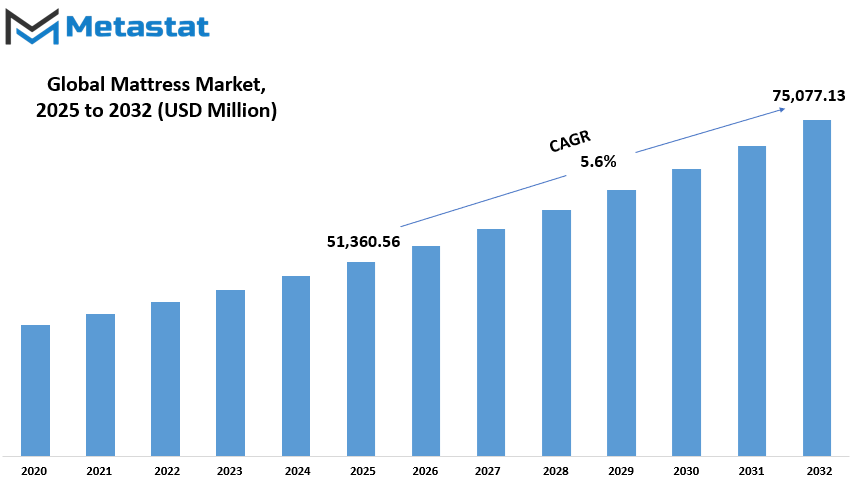
GROWTH FACTORS
The global mattress market is growing at a rapid pace. Several factors contribute to this trend, influencing consumer preferences and behavior. One of the most important factors is the awareness of consumers towards the importance of sleep quality. People are getting more conscious of how sleep impacts their overall health and well-being. As a result, many people are investing in high-quality mattresses that promote better sleep and comfort. This growing awareness pushes the demand for mattresses, including better support and durability alongside aligning these requirements to experience the best comfort and sleep possible.
The innovation for eco-friendly mattresses is increasingly taking over demand as consumers focus not only on an improved good quality of sleep but also for its environmental implications. The use of sustainable materials has also gained currency in the use of mattresses due to the emphasis on organic cotton, bamboo, and natural latex as healthier choices with lower impact on the environment. As demand increases with consciousness regarding the preservation of the natural world, a more environmentally aware populace will raise demand for eco-friendly mattresses, influencing the manufacturer towards innovation and expansion into new technologies for sustainable applications.
However, there are also issues which can cap its growth globally. For example, the price for a high-grade mattress is steep. Though consumers may recognize value in paying extra for a higher quality mattress, for many the cost would still be prohibitive. The luxury mattress that carries more expensive material and superior workmanship also incurs a cost. This may make them unaffordable for people on a tighter budget, thereby limiting the reach of high-end mattress brands.
Another challenge is the problem of recycling or disposing of old mattresses. Millions of mattresses are discarded annually, and recycling them is a complicated and expensive process. This will raise environmental concerns and discourage consumers from replacing their old mattresses. Finding efficient and cost-effective solutions for mattress disposal will be important in solving this challenge.
Despite these hurdles, the mattress online retail market is still one of the more exciting growth prospects. Buying a mattress from an online retailer is less hassle for customers because they get to choose between a much broader range of mattresses. This will continue to expand as people search for convenience and flexibility in their online shopping. With the passage of time, these online channels will greatly fuel the growth of the global mattress market. More affordable and accessible options will become available for consumers worldwide. Looking ahead, the global mattress market will continue to expand with demand from consumers who want better sleep solutions, more eco-friendly materials, and online shopping. While challenges are inevitable, the market is on track to continue growing in the coming years.
MARKET SEGMENTATION
By Type
The global mattress market is still growing rapidly due to increasing demand across different segments. Among the various trends, segmentation by type includes Innerspring, Foam, Hybrid, and other categories. In the near future, these segments are likely to change with consumer preferences, technological advancements, and lifestyle changes.
Innerspring mattresses have been known for their durability and support over time and remain one of the stalwarts in the market. These mattresses feature a network of steel coils, providing a solid base. With increasing consumer interest in sleep quality, innerspring mattresses are expected to be improved with enhanced designs and materials to cater to various sleeping requirements. The demand for Innerspring is likely to remain strong in the future since they have been established as comfort-providing mattresses at relatively affordable prices. However, brands are going to keep innovating within this segment with memory foam or gel layers. They will probably be able to offer more comfort and cooling aspects, which today’s consumers can focus on – sleep technology.
Foam mattresses, which have made a name by their comfort and the ability to dampen motion transfer, will form the market trend. The foam market, which stood at approximately $21,779.82 million, is further expected to grow. Foam mattresses are increasingly preferred because they can mold to the shape of the body and provide customized support. As the technology of foam advances, it will be more breathable and eco-friendly, which is what consumers will be looking for in the future. The growing trend of buying mattresses online will also contribute to the growth of the foam segment as more people seek convenience in shopping and better delivery services.
Hybrid mattresses, which incorporate the best features of innerspring and foam, are the largest segment of the global mattress market. The mattresses are engineered to provide an ideal balance of comfort and support, making them a great fit for a large section of the consumers. Greater customization options are likely to be realized with hybrid designs as they evolve. The hybrid market is likely to benefit from innovations in materials and construction methods that enhance durability while maintaining comfort. As health and wellness trends grow in popularity, hybrid mattresses could become a top choice for those who desire an optimal sleep experience.
The "Others" category would encompass various mattresses that do not fall into the conventional categories. These could be air beds, waterbeds, and medical or adjustable beds, among others. As niche products are being sought after to fulfill specific needs, this category will continue to evolve. The growth, however, will be more innovation- and niche-oriented rather than mass-based.
In conclusion, the global mattress market by type is on the verge of significant changes, and innovation will be the driving force behind it. As consumer preferences evolve, mattresses will become more personalized, sustainable, and technologically advanced, making sleep an even more important aspect of everyday life.
By Size
The global mattress market is ever-increasing, spurred on by rising demand from consumers to be able to sleep better with comfort, quality, and even health. Today, many individuals are making huge investments in their mattresses due to increased awareness that sleep is very vital for health in general. With this, the industry will also have to continue moving on with time by being more innovative and focusing more on customized goods. The global mattress market has been divided into different categories regarding size, like Queen, Twin, Full, and others; each size addresses a specific target group and way of living.
The demand for Queen-sized mattresses is expected to sustain in the years to come since this size suits couples and all those who feel they require additional space for their comfortable sleep. The Queen mattress is an ideal balance between size and affordability, making it a top choice for many consumers. As more people move into apartments and homes where space is at a premium, the demand for Queen mattresses is expected to continue growing. On top of that, with lifestyle affecting the way a person sleeps, Queen-sized mattresses will become highly specialized, advancing materials such as memory foam, hybrid, and eco-friendly in meeting the demand of a multistate customer base.
The second is the growth of the market of Twin-sized mattress. This one is expected to increase in years to come. Many people today have smaller homes or living places and are opting for economical alternatives. Twin mattresses are widely used in children's rooms, guest rooms, and dormitories. They are compact in size and can fit into tight spaces, but they still offer comfort. In the future, Twin mattresses will be designed with added features such as cooling technology and orthopedic support, appealing to those who prioritize health and comfort in a smaller, more affordable package.
Full-sized mattresses are also known as double mattresses, and they are larger than Twin-sized mattresses, but not large enough to fit in small rooms. These will remain popular among those who desire more space to sleep without using the same amount of room as a Queen mattress. Full-sized mattresses will also gain popularity since more and more individuals are looking for flexible and space-saving solutions to smaller homes or apartments. Last but not least, other categories of the global mattress market are likely to retain their innovation.
These might include custom sizes or specialty mattresses for special purposes. For example, there are adjustable beds, and some others designed for specific health problems. This trend will continue and, as customers are seeking more personal products, the industry will provide with more specialized goods. The world mattress market is still growing, offering a wide array of products catering to the divergent needs of the customers of the world.
By Application
The Global Mattress market is expected to grow significantly in the coming years due to increased demand from various sectors, including households, hospitality, and healthcare facilities. People will continue to seek better sleep quality and comfort, and therefore, the demand for high-quality mattresses is expected to rise globally. The most significant growth factor in the market is increasing consumer awareness of the necessity of a good mattress for general health and well-being.
The market can be categorized into its application: households, hospitality facilities, healthcare facilities, and others. In this category, the household segment is dominating because more people are investing in better sleep solutions to enhance their quality of life. This trend is further fuelled by growing disposable income and awareness regarding sleep health. As the population becomes more health-conscious, they are likely to prioritize purchasing mattresses that offer comfort, support, and durability. In the long term, the household segment will continue to be a significant contributor to the Global Mattress market.
The hospitality industry, hotels, resorts, and other types of accommodations are also an integral part of the growth of the mattress market. Comfort is one thing that guests expect during their stays, and the quality of the mattress is the most important thing in ensuring that the experience is pleasant. The more travel and tourism recover and grow, the more hotels will be willing to invest in premium mattresses for guest satisfaction. The demand for special mattresses specifically designed for tourists with extra supporting features or the use of natural materials will soon increase in the future.
Other health facilities such as hospitals and old-age homes have also become potential consumers for this mattress. Most patients are hospitalized for extended periods, so special mattresses must be provided to give them comfort, preventing bed sore pressure. As the aging population increases, there will be more demand for mattresses tailored to the healthcare sector. Technological developments will also feature in the shaping of the future of mattresses used in healthcare, and features such as adjustable firmness and temperature control will gain momentum.
Other areas of applications consist of commerce and industry. Due to ongoing innovation, new materials and technologies are introduced, which makes it possible for mattresses to be used more generally for various purposes. This is likely to provide further impetus to the Global Mattress market, offering a choice to consumers.
The Global Mattress market is likely to grow in the future, driven by changing consumer preferences and increasing demand in various sectors. With improvements in materials, comfort technologies, and a greater emphasis on health, the market will continue to change to meet the needs of both individual consumers and industries at large.
By Distribution Channel
The global mattress market is growing steadily due to several factors, such as evolution in consumer preferences, technological advancements, and an increased requirement for quality sleep. In the near future, the market is expected to continue growing and provide a wide range of options suited to various needs and preferences. One of the most important factors in this growth is the segmentation of the market by distribution channel, which plays a significant role in how consumers buy their mattresses. The segmentation can be divided into two major categories: offline and online sales channels.
Offline sales have traditionally been the dominant method for mattress purchases. Brick-and-mortar stores, which comprise furniture shops, bedding outlets, and department stores, have been the most widely encountered touchpoints among consumers approaching for the purchase of a mattress. Here, the consumer can also personally touch, try, and feel the various options under consideration while obtaining suggestions from salespeople before finalizing a decision. It has been a significant factor in the development of the offline market. However, this offline market will change with time as the changing consumer behavior and technology evolve. Therefore, in the future, these stores may make the shopping experience of mattresses better through new technologies, for example, virtual reality, by which customers may feel the mattress features without lying on it physically.
On the other hand, online sales have increased manifold during the last couple of years. The ability to shop from home with competitive pricing has increased the attractiveness of online shopping. Major online retailers and direct-to-consumer mattress brands make browsing easy, free trials, and convenient delivery, making it easy for customers to buy without entering a store. This is a trend that is expected to continue, and with advancing technology, online platforms are likely to become even more personalized and immersive shopping experiences. The future is close when the purchasing decision is made by recommending the best mattress according to an individual's sleep habits and preference, which would further boost online sales.
In the global market, distribution over online and offline channels will be more balanced in the future. While offline stores will still play an important role in providing physical experiences and personalized advice, online sales will continue to grow due to their convenience, competitive prices, and advancements in technology. This may also mean a shift in how mattresses are sold to the consumer as the market evolves, but there will still be a focus on providing for diverse needs of consumers through ensuring they can get the right quality of product in any shopping channel they desire.
|
Forecast Period |
2025-2032 |
|
Market Size in 2025 |
$51,360.56 million |
|
Market Size by 2032 |
$75,077.13 Million |
|
Growth Rate from 2024 to 2031 |
5.6% |
|
Base Year |
2024 |
|
Regions Covered |
North America, Europe, Asia-Pacific Green, South America, Middle East & Africa |
REGIONAL ANALYSIS
The global mattress market has a healthy growth pace through the requirement in different regions across the world. As of now, the market is divided into geographically distinct areas, each with its respective unique features and growth opportunity. These regions include North America, Europe, Asia-Pacific, South America, and the Middle East & Africa. Each of these regional markets is strategic to the industry development of mattress markets, because of specific trend and consumer behavior in each which drives their relative performance.
Geographically, it is a relatively significant player in the global marketplace. It contains some of the critical countries in it, including but not limited to the U.S., Canada, and Mexico. The U.S. is primarily driven by its market leadership for comfort, along with innovation in mattress technologies as well as retail. Consumers who have been targeting comfort are nowadays seeking mattresses providing comfort along with advanced features including smart mattresses with sleep pattern tracking. North America continues to be a key driver of the global mattress market growth, inspired by technological advancements and increased awareness about quality sleep.
Matress markets also grow in the same fashion in Europe, with significant activity in countries like the UK, Germany, France, and Italy. Europeans have always valued quality sleep and comfort, and it is no wonder that the market for quality mattresses is growing consistently. Consumer interest in the region is now running high in terms of ecosensitive mattress production because consumers are becoming increasingly conscious of the environment. Europe, with brands that have been operational for decades and an emphasis on innovation, will only experience steady growth as consumers move towards mattresses that enhance the hygiene of sleep and general well-being.
The most robust growth is expected in the Asia-Pacific region, which comprises rapidly developing countries like India, China, Japan, and South Korea. This region boasts a huge population base, and with rising disposable incomes and changes in lifestyle, consumers are now increasingly investing in quality sleep products. With growing urbanization, demand for comfortable, space-efficient mattresses is growing, and the region is experiencing growth in online sales platforms such that consumers may now purchase their mattresses directly from the manufacturer without going through various middlemen. Such a trend would probably characterize this market in the coming years.
South America, with countries like Brazil and Argentina, is slowly gaining traction in the global mattress market. Demand for mattresses is growing in this region, but it is relatively limited compared to other regions. However, as economies in these countries stabilize and consumer preferences evolve, the mattress market in South America is expected to expand gradually.
Last, the Middle East & Africa region with regions like GCC countries, Egypt, and South Africa is most likely to grow at a moderate level. Although there is some demand for quality mattresses in some parts of this region, still growth potential exists in these countries due to the reasons that these are investing more into infrastructure and enhancing the retail sectors. The growing middle class in the region is also anticipated to continue focusing on comfort and good sleep, driving the market.
The global mattress market will undergo drastic changes in the future, considering the changing needs of consumers. The market is expected to become more comfort-oriented, health-conscious, and sustainable. The technological innovations, such as smart mattresses and sleep tracking features, will increase, and regional markets will be responsive to the demands of their consumers.
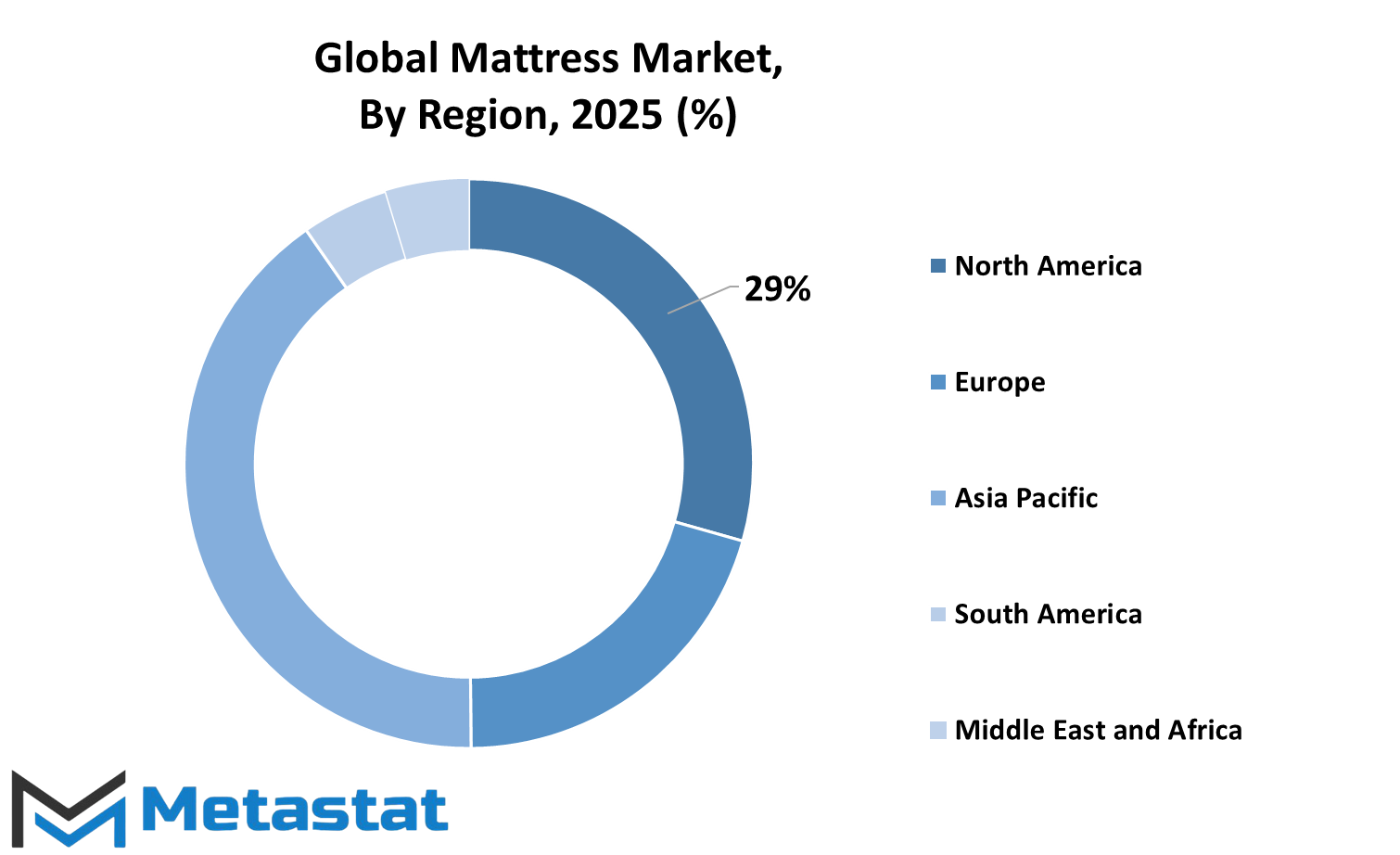
COMPETITIVE PLAYERS
The global mattress market is a competitive market of many companies that fight for the attention of consumers. Among the companies are the most recognizable names in the bedding and sleep products industry. This competition has been driven by changing consumer preferences, technology, and the rising awareness of the importance of sleep to overall well-being.
The biggest global players in the mattress market are Tempur Sealy International, Inc., famous for innovative products and strong market presence. Having long been a leader in the industry, Tempur Sealy managed to maintain that position through a constant flow of new technologies intended to improve sleep quality. Another prominent player is Serta Simmons Bedding, LLC, whose legacy spans decades because of the varieties available to suit the tastes of various consumers; however, both have contributed to the growth of the industry because of quality and comfort.
Other significant competitors in this market are Boll & Branch, Southerland Sleep, Leesa Sleep, LLC, and Purple Innovation, Inc. They are differentiated by unique features and designs of mattresses. The company has put a strong emphasis on sustainability and high-quality materials so that consumers value their products and practices in business as environmentally friendly. These companies, such as Tuft & Needle, Amerisleep, and Saatva, Inc., also use direct-to-consumer models. They provide comfort and durability without raising their price.
Some other players in the global mattress market include Kingsdown, Inc., Therapedic International, Naturepedic, Helix Sleep, and Avocado Green Mattress. These companies have earned much reputation by their quality mattresses suitable to specific needs, such as organic or green, and personalizing the comfort level according to desired behavior. Will be interesting to see how it plays out in the future with this change in market.
As the online mattress retailers are gaining popularity, companies like Nolah Sleep LLC, Layla Sleep, Brentwood Home, Signature Sleep, Sealy Corporation, Simmons Bedding Company, and Sleep Innovations, Inc. are using digital channels to reach the masses. The trend is bound to continue, as more people opt for purchasing mattresses online for greater convenience and product variety.
The global mattress market will remain highly competitive with established brands as well as new entrants in the fray. As consumers are becoming increasingly choosy, innovative, comfortable, and sustainable products will be key for companies looking to maintain their positions in the market.
Mattress Market Key Segments:
By Type
- Innerspring
- Foam
- Hybrid
- Others
By Size
- Queen
- Twin
- Full
- Others
By Application
- Households
- Hospitality Facilities
- Healthcare Facilities
- Others
By Distribution Channel
- Offline
- Online
Key Global Mattress Industry Players
- Tempur Sealy International, Inc.
- Serta Simmons Bedding, LLC
- Boll & Branch
- Southerland Sleep
- Leesa Sleep, LLC
- Purple Innovation, Inc.
- Tuft & Needle
- Amerisleep
- Saatva, Inc.
- Kingsdown, Inc.
- Therapedic International
- Naturepedic
- Helix Sleep
- Avocado Green Mattress
- Nolah Sleep LLC
- Layla Sleep
- Brentwood Home
- Signature Sleep
- Sealy Corporation
- Simmons Bedding Company
- Sleep Innovations, Inc.
- Ashley Furniture Industries, Inc.
- IKEA
- Puffy Mattress
- Nectar Sleep
WHAT REPORT PROVIDES
- Full in-depth analysis of the parent Industry
- Important changes in market and its dynamics
- Segmentation details of the market
- Former, on-going, and projected market analysis in terms of volume and value
- Assessment of niche industry developments
- Market share analysis
- Key strategies of major players
- Emerging segments and regional growth potential



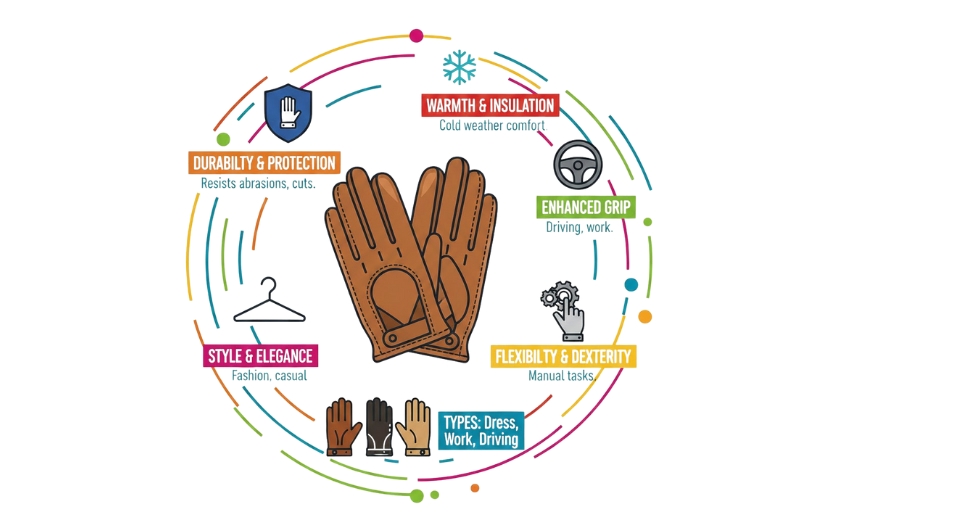
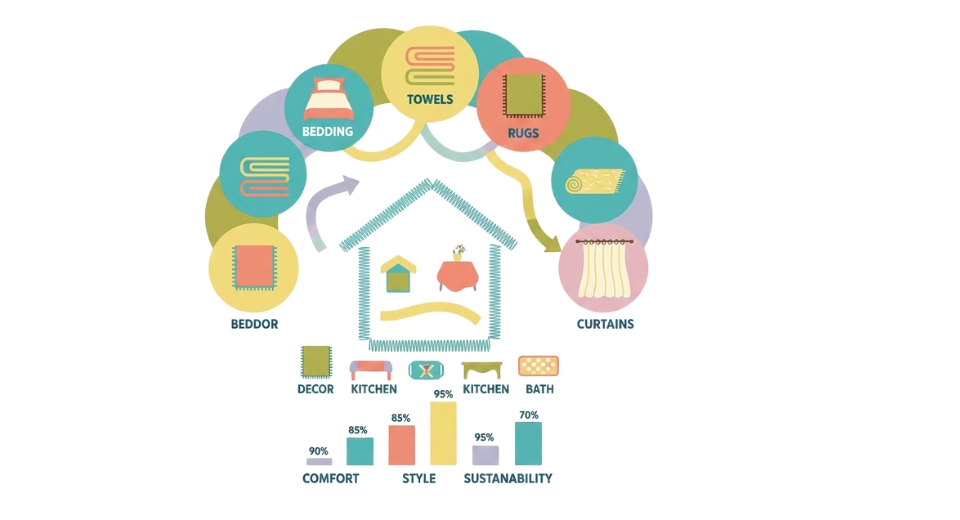
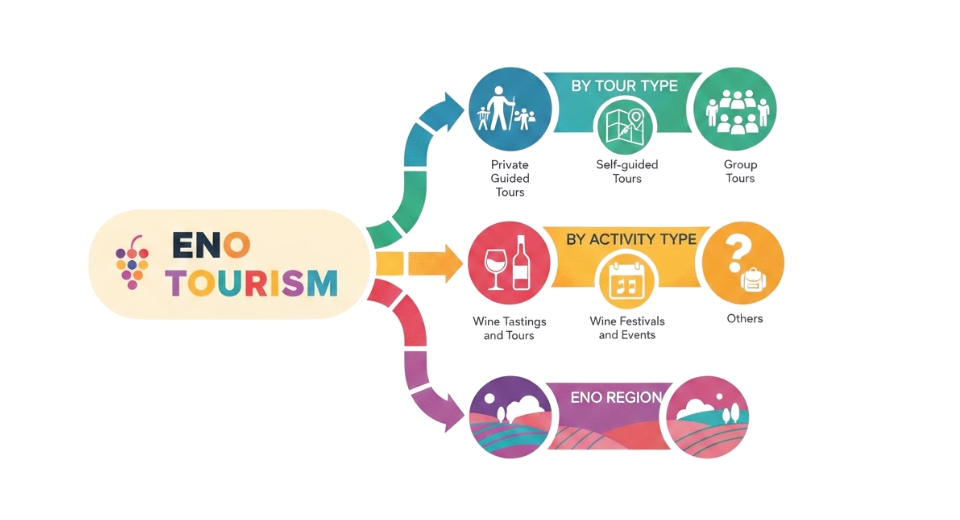
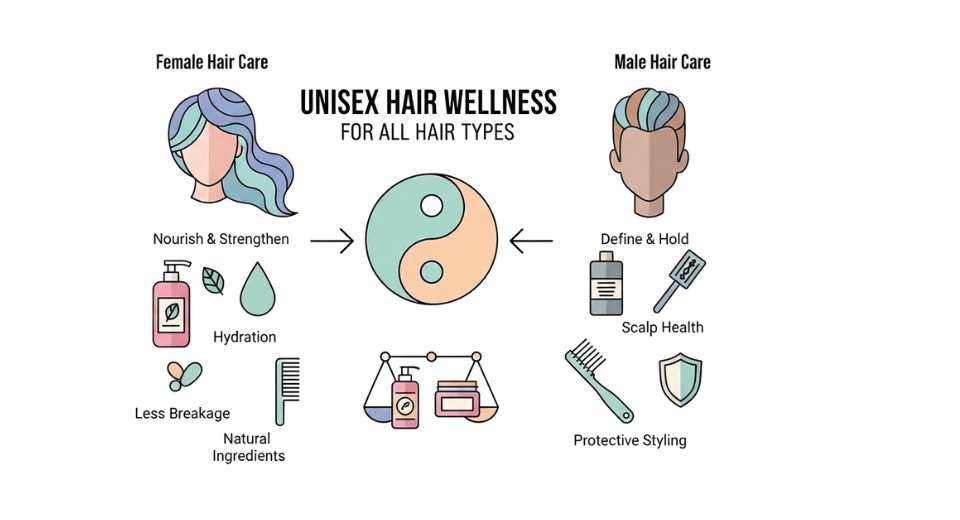

 US: +1 3023308252
US: +1 3023308252






